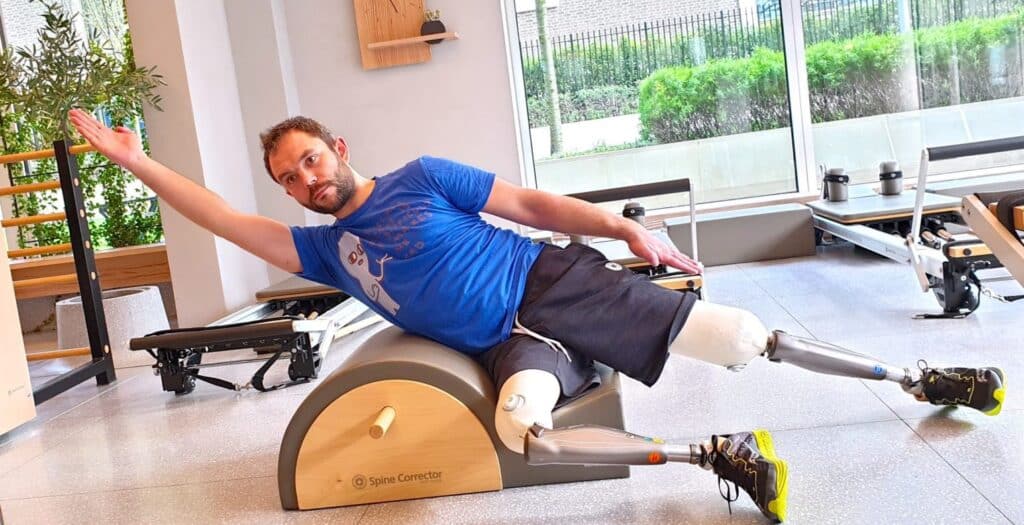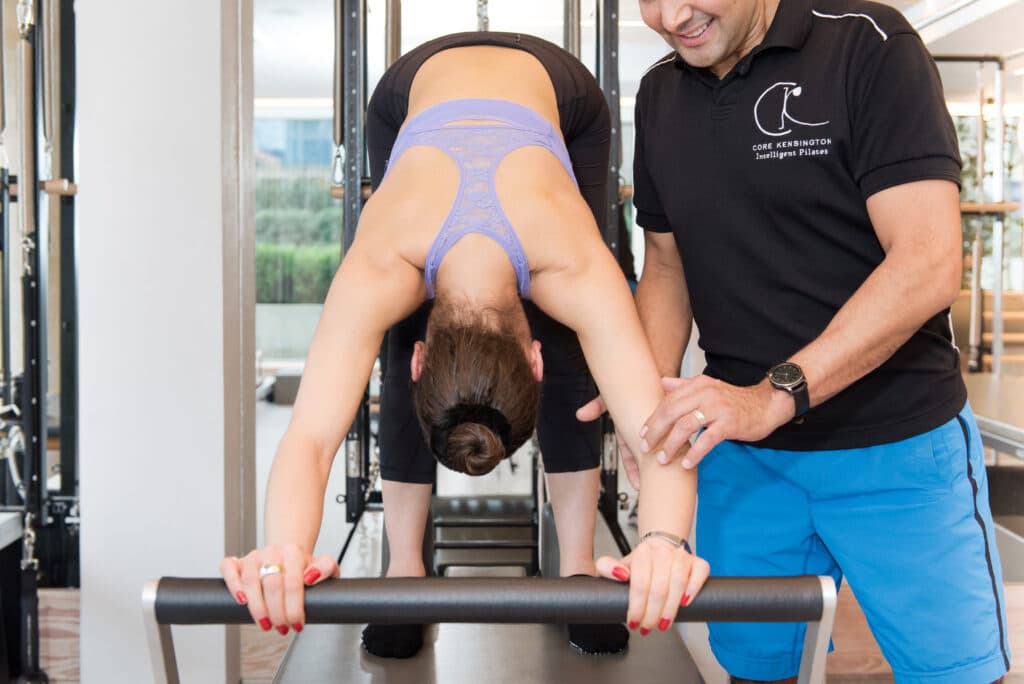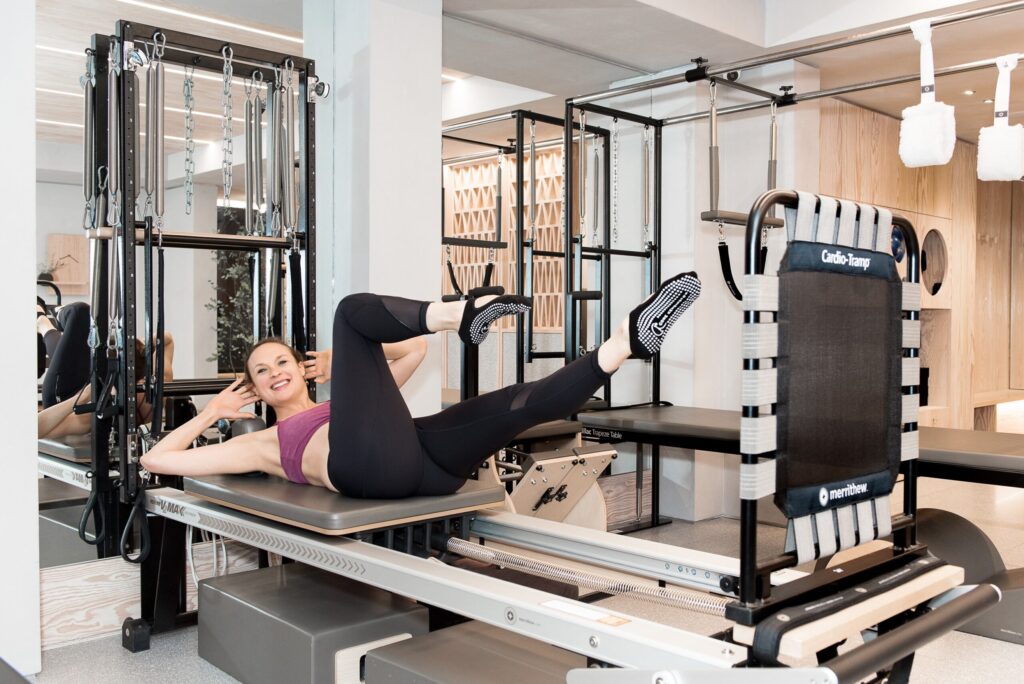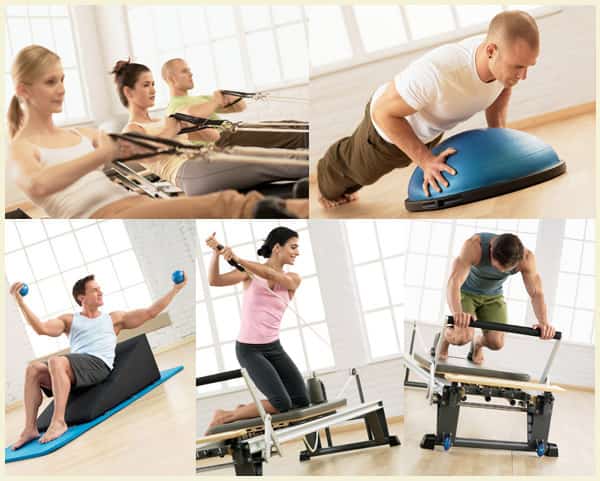Pilates is a form of exercise that aims to strengthen your entire body evenly while paying particular emphasis on core strength. In fact, the cornerstone to this exercise is controlling and working your body from the core to the periphery.
Additionally, Pilates exercises help rebalance the muscles around the joints and improve general fitness and wellbeing. Finally, these exercises can be done on the floor or on specialised equipment, such as the Reformer, Cadillac, Stability Chair or barrels.
Who came up with Pilates?
Born in Germany in 1880, the late Joseph Hubertus Pilates developed the Pilates method of exercise. Ahead of his time, believed mental and physical health were closely interconnected.
His original method of body conditioning was originally called Contrology, “a complete coordination of body, mind and spirit” (Pilates, Miller. 2000, p9).
“It is only through ‘Contrology’ that this unique trinity of a balanced body, mind and spirit can be ever attained ” (Pilates, Miller. 2000, p23).
Inspired?
Watch this animation on YouTube. It’s funny and informative


Who is Pilates for?
Practically everyone can benefit from Pilates exercise. People from all walks of life, ages, ability level and fitness backgrounds practise Pilates regularly. Preparatory exercises and infinite modifications allow the technique to be appropriate for many different body types and abilities.
Indeed, our Pilates method can be applicable to sport-specific training and everyday life. Specialised Pilates equipment can help provide support for those with injuries or mobility issues as well as challenge the most advanced client.
Pilates Today
Although Joseph Pilates was ahead of his time, he believed then that the normal spine should be straight (Pilates 2000, p148). In contrast, today we understand that the spine should maintain 4 natural curvatures for best shock absorption.
Certainly, since the death of Joseph Pilates on 9 October 1967, new information in exercise, sports medicine and physical therapy has become available. As a result, updated, contemporary approaches to the original Pilates method have also become widely accepted today.
We teach a contemporary Pilates at Core Pilates Studios and we call it “Intelligent Pilates”
What are the health benefits of Pilates?
There are innumerable accounts on the health benefits of Pilates practice. In fact, a growing body of evidence is arising on practising Pilates exercises.
Practitioners of the method widely advocate its benefits. Some of the benefits include reducing back pain, improving posture and mobility, and increases in muscle tone. Practising Pilates regularly can help rebalance the muscles around joints and relieving stress and tension.
Surely, elite athletes, including dancers and footballers practise Pilates regularly in order to compliment their training. Even more, the aim is to develop whole-body awareness, strength and flexibility and help reduce the risk of injury.

Can I injure myself in Pilates?
Improper movement and overloads on joints, muscles and connective tissue can cause injury. As Pilates is a low-impact exercise and controlled movement is paramount, injuries are very uncommon. However, we strongly recommend that you chose a qualified instructor and a class level that suits your abilities and fitness level.
Before you start exercising, we advise that you consult with your GP or relevant healthcare professional on the suitability of certain exercises or movements. For instance, if you suffer from osteoporosis or an acute lumbar herniation with neurological symptoms, spinal flexion would be an absolute contraindication.
“Classical” style instructors at Core Pilates Studios are certified in STOTT PILATES® and overseen by a registered osteopath who is trained in rehabilitation exercise. Our studio recommends that you book a one-on-one assessment before any group class if you have any concerns regarding your injury.

What is the difference between Pilates and Yoga?
Yoga is a group of ancient physical, spiritual and mental disciplines, and modern yoga is a physical activity comprised mainly of asanas. Asanas are body postures or balancing postures typically ending with a period of meditation or relaxation.
Nevertheless, Pilates is a full body workout that does not involve meditation and does not holding any positions or poses. Joseph Pilates was inspired by various disciplines including yoga, gymnastics, ballet dance and athletic sports.
Furthermore, Pilates chief emphasis is on training the abdominal muscles, or “the core”. Moreover, our contemporary Pilates method is anatomically based, making it relevant to rehabilitation and sports therapy.
Lastly, Pilates exercise uses various pieces of equipment, including the reformer, the Cadillac, the stability chair and the barrels.
OUR METHODOLOGY
We teach STOTT PILATES®, a contemporary approach.
We are an independent studio using Merrithew equipment and STOTT PILATES® methodology.
STOTT PILATES® incorporates modern exercise principles, proven and accepted practices in bio mechanics, rehabilitation and athletic performance enhancement.
After realising the benefits of the original Pilates method, co-founders Lindsay and Moira Merrithew dissected and re-connected this unique form of exercise.They developed a comprehensive, systematic, contemporary approach to the original teachings. This was done in collaboration with a team of physical therapists and sports medicine and exercise professionals.
Contemporary Pilates exercises are designed to restore the natural curves of the spine and re balance the muscles around the joints. Consequently, the exercises place more emphasis on pelvic and scapular stabilisation, and integration of all the parts of the body into one.
Intelligent Exercise, Profound Results®

